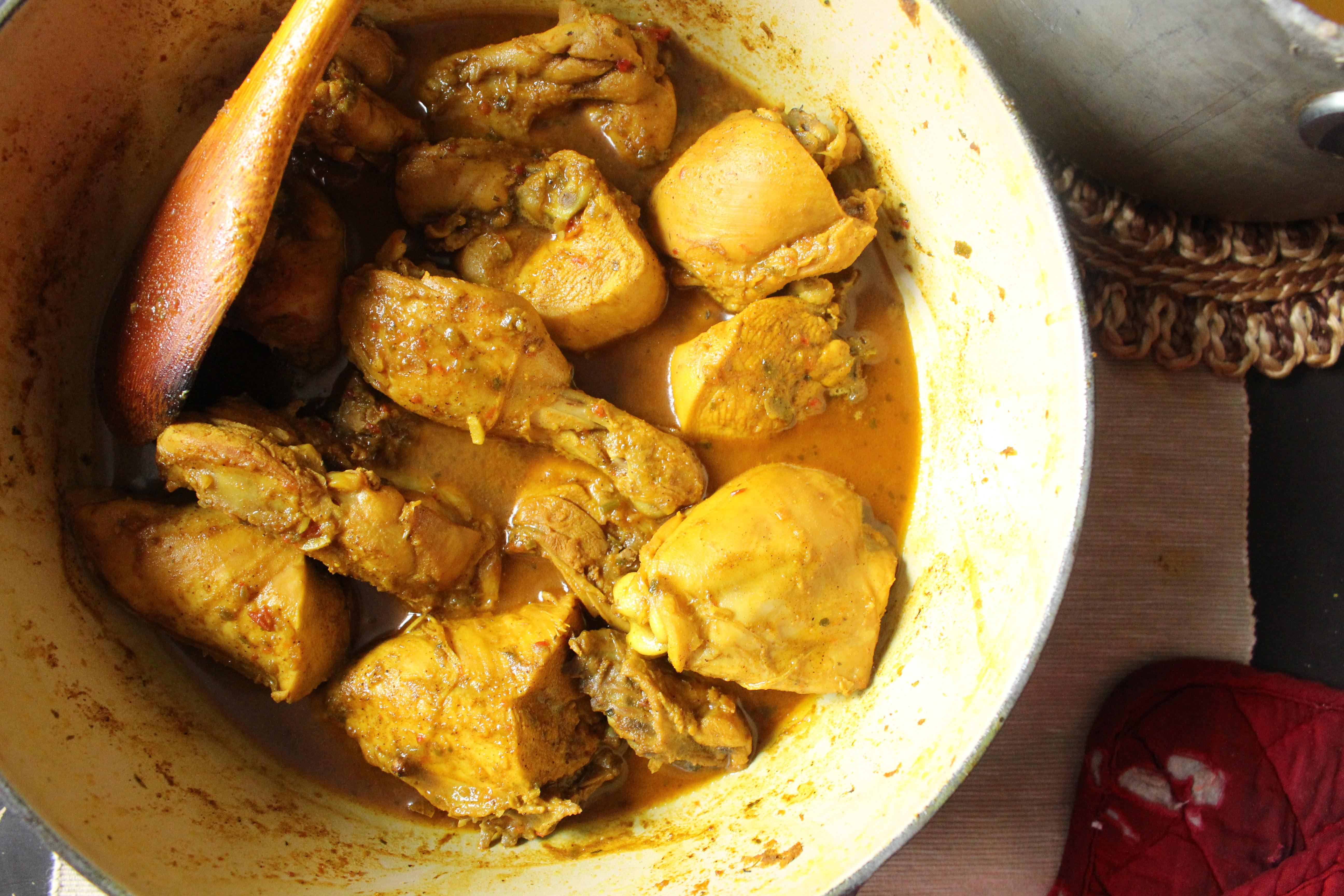 Is rhubarb out of season yet? I am way behind with this post, I know. I have been behind on life, in general, as of late. So even though I made my husband track down rhubarb when the season for it first came around (it is surprisingly difficult to find around these parts) and serendipitously also had some delicious, though overripe, Haitian mangoes on hand to make this weeks ago…I am only now sharing it with you. Sad face.
Is rhubarb out of season yet? I am way behind with this post, I know. I have been behind on life, in general, as of late. So even though I made my husband track down rhubarb when the season for it first came around (it is surprisingly difficult to find around these parts) and serendipitously also had some delicious, though overripe, Haitian mangoes on hand to make this weeks ago…I am only now sharing it with you. Sad face.
I know the combination of rhubarb, overripe mangoes, anise seeds and mustard oil aren’t ingredients most people have on hand most of the time. But as we near the end of rhubarb season, I hope you can still attempt to make this chutney. Or at least save it for next year.
I know most people tend to make some sort of rhubarb/strawberry pastry this time of year but something strange has happened to me recently. My sweet tooth has faded. Maybe I’ve made one too many cookies. But for some reason, butter rich, sugar filled treats just don’t give me the same satisfaction it used to. Not to say I’ve shunned them for good. I still taste test what I make and indulge when I go out with my girlfriends. Anyway, I was looking for something a bit more savory, and palatable for the rest of the clan. This was probably one of my most successful experimentations. It was annihilated at my in-laws’. Reduced to half in my own home overnight. It just hit every note. Admittedly, there is a lot of sugar in this, but only because the rhubarb was so darn tart. I don’t regularly have rhubarb, I don’t know if they range in tartness, but the tartness of this batch rivaled any lemon. If yours is less tart, feel free to start out with a smaller amount of sugar, and add more as needed.
Ingredients
- 1 tbsp mustard oil
- 1 pinch anise seeds or pach forom
- 1/2 red onion, diced
- 3 stalks of rhubarb, leaves and ends trimmed, diced into 1 in pieces
- 4-5 dried red chilis (less for mild heat)
- 1/4 cup brown sugar
- 1 tbsp apple cider vinegar
- 1 1/2 tsp salt
- pulp of 2 overripe mangoes, preferably the haitian variety
Directions
- Heat oil over medium high heat in a medium saucepan. Add the anise seeds or pach forom and fry until fragrant, about 30 seconds. Add the onions and cook until translucent. Add rhubarb, chilis, sugar, vinegar, salt and mango pulp. Stir and bring to a boil. Reduce heat to a simmer and cover.
- Cook for 40 minutes, stirring occasionally, until everything is broken down. Taste for seasoning.















 My semester abroad in Rome was the most fantastic 4 months of my life (no offense husband, kids). Immersing myself in a language and culture I had studied and seen from afar for YEARS was just so rewarding. Living down the street from the pantheon and campo dei fiori was just other worldly. But what was even better than living down the street from the pantheon, was living down the street from the gelaterie by the pantheon: gelateria della palma and giolitti. And what was so awesome about campo dei fiori is the open air market that sits daily. Needless to say, I had amazingly fresh food every day. I remember the very first thing I ate was bruschetta with kind of lackluster tomatoes (it was January, duh) but with such fruity olive oil and complex, crusty bread, that I was completely satiated. And I ate like that for about a week or two, pizza al taglio, pasta a cacio e pepe, stuffed zucchini flowers, fried artichokes, all the non porcine Roman specialties. Until I started getting homesick.
My semester abroad in Rome was the most fantastic 4 months of my life (no offense husband, kids). Immersing myself in a language and culture I had studied and seen from afar for YEARS was just so rewarding. Living down the street from the pantheon and campo dei fiori was just other worldly. But what was even better than living down the street from the pantheon, was living down the street from the gelaterie by the pantheon: gelateria della palma and giolitti. And what was so awesome about campo dei fiori is the open air market that sits daily. Needless to say, I had amazingly fresh food every day. I remember the very first thing I ate was bruschetta with kind of lackluster tomatoes (it was January, duh) but with such fruity olive oil and complex, crusty bread, that I was completely satiated. And I ate like that for about a week or two, pizza al taglio, pasta a cacio e pepe, stuffed zucchini flowers, fried artichokes, all the non porcine Roman specialties. Until I started getting homesick. 







